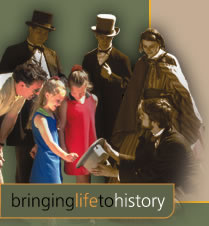

|
|
|||
|
|
|||
|
|
George Edwin Baker (1844-1928)
George Edwin Baker was the eldest of ten children born to John Baker (1817-1894) and Caroline (Bagnall) Baker (1818-1903) of Bedeque. His great grandfather, John Baker (c1748-1821), was a Quaker from Pennsylvania. During the American Revolution, he joined the Loyalist side and was forced to flee with his family to New York from where they were evacuated to Nova Scotia. In the late 1780s, the Bakers settled on land in the Bedeque area of St. John's Island (PEI) where John Baker farmed and served as the community's blacksmith.
George may have been influenced by his father to become a skilled builder since in addition to being a farmer, John Baker was also a carpenter. George Baker did not, however, enroll in any formal architectural school.  In later life, he would study architecture through correspondence courses. In his youth, George left the Island, perhaps following the advice of the American journalist, Horace Greeley, who told the youth of his country to "Go West young man... go West!" George would spend time in British Columbia and then venture down to Colorado and the western states. Here, he witnessed the growth of many new cities and saw firsthand the architectural techniques and styles which were then in fashion. Two of his brothers would eventually move to the United States, Isaac to Massachusetts and Charles to Missouri.
In later life, he would study architecture through correspondence courses. In his youth, George left the Island, perhaps following the advice of the American journalist, Horace Greeley, who told the youth of his country to "Go West young man... go West!" George would spend time in British Columbia and then venture down to Colorado and the western states. Here, he witnessed the growth of many new cities and saw firsthand the architectural techniques and styles which were then in fashion. Two of his brothers would eventually move to the United States, Isaac to Massachusetts and Charles to Missouri.
By 1874, he was back in Prince Edward Island which was then the newest province in the Dominion of Canada, having joined confederation a year earlier. Baker was living in Miscouche and was married in a Baptist ceremony on December 29th to Sophia Jane Clarke (1846-1917) of Cavendish. In 1874, he designed his first church on the Island for the Presbyterian congregation of Long River. A Mr. Dempsey of Summerside was the contractor for the project, while one of the carpenters was Andrew MacLeod of Irishtown. This church is now located within the Avonlea Village in Cavendish where it hosts popular summer plays and concerts.
The 1881 Census reveals that George and Sophia were residing in Summerside with Ella and Albert, their two young children. His occupation is listed as a "house joiner". This was a more distinct and advanced skill than being a carpenter, since a joiner could cut and fit joints in wood so they would connect together without the use of nails. It also required the ability to use specific equipment. George may have been working with his brother, Philip Baker (1845-1893), who was then also living in Summerside as a carpenter/joiner and serving in the town government as a councillman.
In 1888, the Presbyterian congregation of Cardigan in Kings County employed George Baker to design their new church. The contractor for this building was Schurman, Clark, and Company of Kensington. The Schurmans were also descended from Bedeque Loyalists and Baker would continue to work closely with them.  His son, Albert Baker (1879-1956), would marry into the Schurman family and served as one of the directors of the M.F. Schurman Company Limited in 1907. In the 1890s, they would co-operate on other ecclesiastical projects including the magnificent and well preserved St. John the Baptist Roman Catholic Church in Miscouche (1892)
His son, Albert Baker (1879-1956), would marry into the Schurman family and served as one of the directors of the M.F. Schurman Company Limited in 1907. In the 1890s, they would co-operate on other ecclesiastical projects including the magnificent and well preserved St. John the Baptist Roman Catholic Church in Miscouche (1892)  and its associated presbytery house (1895); the Summerside Methodist (now Trinity United) Church (1893); St. Anne's Roman Catholic Church in Lennox Island (1895); and the fine Queen Anne style Sacred Heart Parish House in Alberton (1895).
and its associated presbytery house (1895); the Summerside Methodist (now Trinity United) Church (1893); St. Anne's Roman Catholic Church in Lennox Island (1895); and the fine Queen Anne style Sacred Heart Parish House in Alberton (1895).
In 1895, Baker completed his largest commercial building for R.T. Holman  on Water Street in Summerside. Holman's was then the largest family owned department store in the Maritimes. The three storey brick structure still dominates the Water Street streetscape and has recently been renovated into offices and commercial space. Its brick construction helped protect it from the devastating fire which engulfed Summerside in 1906.
on Water Street in Summerside. Holman's was then the largest family owned department store in the Maritimes. The three storey brick structure still dominates the Water Street streetscape and has recently been renovated into offices and commercial space. Its brick construction helped protect it from the devastating fire which engulfed Summerside in 1906.

The fire began in the railway yard and spread northwest through the town destroying over one hundred fine residential properties and churches. This tragedy would provide Baker with many building opportunities and he spent the remainder of his career mainly on Summerside projects. 
In 1907, St. Mary's Anglican Church obtained his services and rebuilt their building in brick. Interestingly, he won this contract over the more famous Island architect, William C. Harris. He would also construct the church hall for them in 1927. Also in 1907, the Baptist Church employed him to create a new wooden structure designed on the Akron plan. He later added a hall to this building in 1923. The Baptist congregation of Bedeque also employed Baker in 1907 to work on their church.
For the remainder of the decade, Baker was designing two large Colonial Revival style homes for two brothers, originally from Canoe Cove, who were prominent physicians in Summerside. Dr. Alex MacNeill and Dr. John MacNeill had their new homes constructed in the "burnt district" of  the town which had been destroyed in the Great Fire of 1906. Both men were instrumental in the building of the first Prince County Hospital in 1912, which was also designed by George E. Baker.
the town which had been destroyed in the Great Fire of 1906. Both men were instrumental in the building of the first Prince County Hospital in 1912, which was also designed by George E. Baker.
Another surviving example of one of Baker's commercial buildings is the Bank of New Brunswick Building on Water Street in Summerside. Located beside the former Holman's Store, it is a rare example of an Edwardian era commercial building in the province.
One of his last projects was the Capitol Theatre on the corner of Central and First Streets. This building also contained bowling lanes and a restaurant. It was demolished in 2003.
George E. Baker was living with his son, Albert, in Charlottetown when he passed away in December 1928. His remains returned to Summerside on the train and the funeral was held at the Summer Street residence of John A. Smallman. He rests in Summerside's People's cemetery.
 Baker's obituary declared: "His life and all his dealings with his fellow man were as straight as the lines he drew." Another tribute declared that "...his skill, painstaking work and great integrity brought him into considerable prominence and fame." Today, many of his buildings survive and continue to serve their communities in important ways.
Baker's obituary declared: "His life and all his dealings with his fellow man were as straight as the lines he drew." Another tribute declared that "...his skill, painstaking work and great integrity brought him into considerable prominence and fame." Today, many of his buildings survive and continue to serve their communities in important ways.
Some of Baker's work in PEI includes:
*Not yet listed or recognized.
1874
Long River Presbyterian Church (now the church in the Avonlea Village, Cavendish)
1888
St. Andrew's Presbyterian Church, Cardigan
1892
St. John the Baptist Roman Catholic Church, Miscouche
1893
Summerside Methodist, (now Trinity United) Church
1895
St. John the Baptist Presbytery, Miscouche*
Thomas Christopher Baker House, 141 Summer Street, Summerside*
Sacred Heart Parish House, Alberton
St. Anne's Roman Catholic Church, Lennox Island
R.T. Holman Store (now offices and commercial space) Water Street, Summerside
1900
John A. Brace House, 159 Spring Street, Summerside
1907
St. Mary's Anglican Church, Summerside
United Baptist Church, Summerside; hall added in 1923
Baptist Church, Central Bedeque* (steeple)
1908
Dr. Alex MacNeill House, 44 Spring Street, Summerside
1909
Dr. John MacNeill House, 253 Church Street, Summerside
Bank of New Brunswick Building, 268 Water Street, Summerside
1912
Prince County Hospital, corner of Central and Market Streets, Summerside (demolished)
1913
William Warren Baker House, 257 Pleasant Street, Summerside*
1919
Crockett-Gallant Building, 281 Water Street, Summerside
1926
Capitol Theatre, corner of Central and First Streets, Summerside (demolished)
1927
St. Mary's Anglican Church Hall, Summerside


|

|


